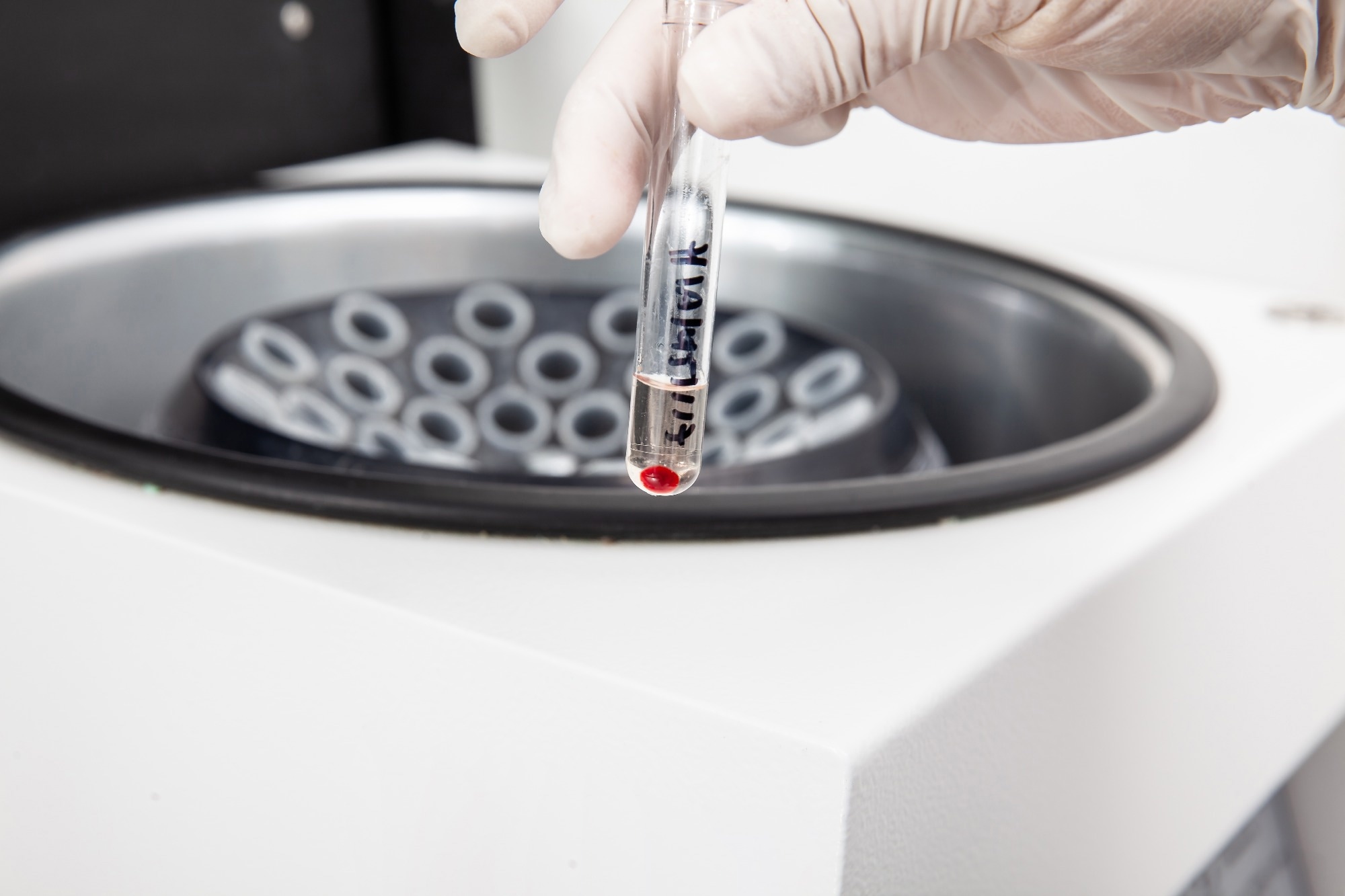What does the supernatant contain?
How is the supernatant formed in precipitation reactions?
How is supernatant formed in precipitation reactions?
How does the supernatant differ from the precipitate?
References
Further reading
Supernatants are recovered organelle factions of the cell produced after crystallization, precipitation, centrifugation, or other processes that separate cellular extracts. It is also called the supernate.
The supernatant is typically free of precipitate, translucent, and of lower density than the precipitate, which typically settles in its layer or pellet within the solution. The process by which the supernatant separates from the precipitate is called decantation.
The supernatant is formed through several sequential steps in any given separation reaction; it typically becomes less complex as the procedure for separation progresses.
 What is a supernatant? Image Credit: Anamaria Mejia/Shutterstock.com
What is a supernatant? Image Credit: Anamaria Mejia/Shutterstock.com
What does the supernatant contain?
The supernatant contains cellular organelles. The supernatant contains the respective subcellular fraction at each step, and the pellet can be used for the subsequent step.
How is the supernatant formed in precipitation reactions?
In precipitation reactions, the clear liquid that remains above the precipitated material is called the supernatant.
In precipitation, a substance is subject to supersaturation (that is, the level at which the solute concentration exceeds its solubility at given conditions), causing it to precipitate.
How is supernatant formed in precipitation reactions?
Centrifugation uses centrifugal force to separate particles from a solution. This separation is achieved according to the size, shape, density, and viscosity of the medium on the speed of the rotor.
Centrifugation causes more dense components to move away from the axis of the centrifuge; concomitantly, the less dense components of the mixture migrate towards the axis.
The effective gravitational force can be increased to cause the precipitate to travel rapidly to settle at the bottom of a tube. What remains in the solution is referred to as the supernatant and contains the soluble components of the cell.
Centrifugation usually represents the first step in most fractionations - low-speed centrifugation causes the removal of cellular debris, which leaves behind the supernatant.
The supernatant contains these smaller cell components after the first round of centrifugation. There are several types of centrifugation, but all proceed with the same principle: phase separation, during which components of a mixture are converted from a matrix or aqueous medium to a solvent.
There are differential forms of centrifugation:
- Density gradient centrifugation: macromolecules within a mixture move through a density gradient until they settle at a density equal to their own.
- Differential centrifugation: a stepwise increase in centrifugation speed is used to separate components of a mixture. Organelles and other sub-cellular particles are separated based on their sedimentation rate.
- Ultracentrifugation: a stepwise increase in centrifugal force which causes sedimentation of particles as small as 10kDa.
These result in different compositions of the resultant supernatant as the protocols for centrifugation typically specify the relative centrifugal force and degree of acceleration necessary to achieve the desired outcome.
How does the supernatant differ from the precipitate?
The precipitate refers to the solid medium deposited in a solution. It appears with the consequences of the separation reaction conditions. These include a change in the chemical conditions, which include concentration changes, a change in temperature, ionic strength or pH, or a physical process such as centrifugation.
The precipitate is distinct from the precipitant, the chemical species that stimulate precipitate production.
Both the supernatant and the precipitate are related; they form the two distinct components of a mixture undergoing separation. The supernatant differs from the precipitate in its state; the supernatant is liquid and solid.
References
Further Reading